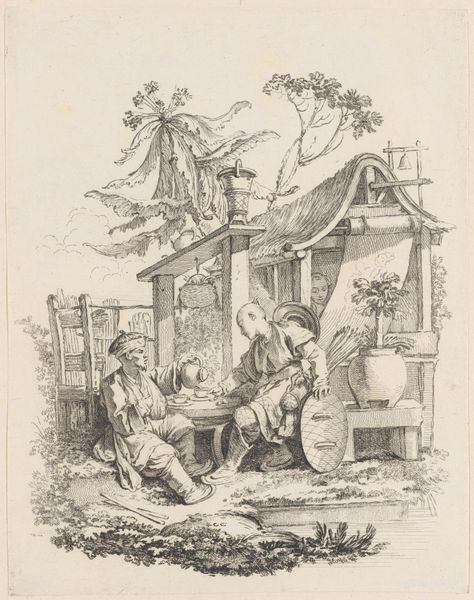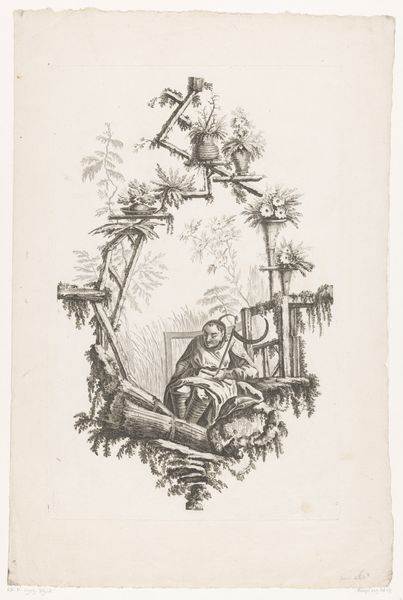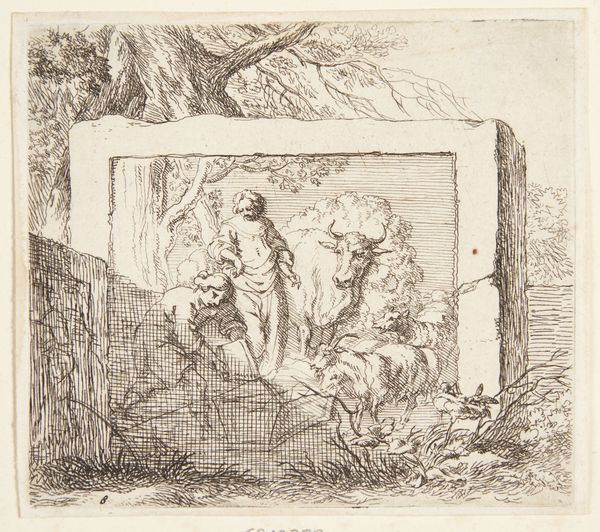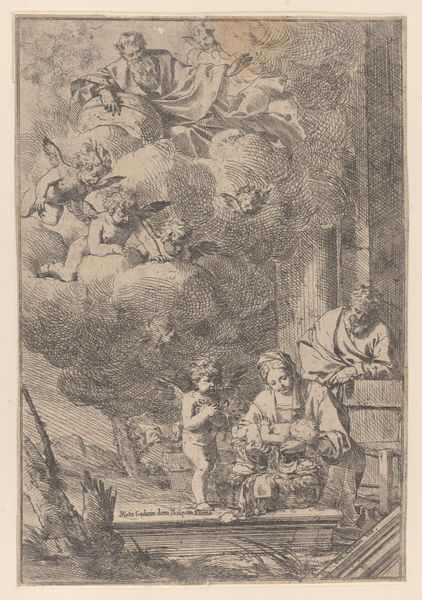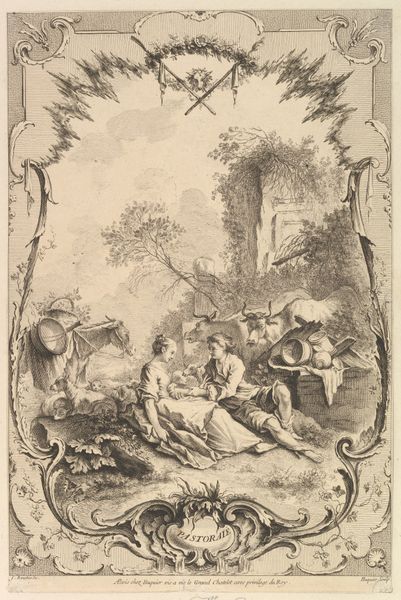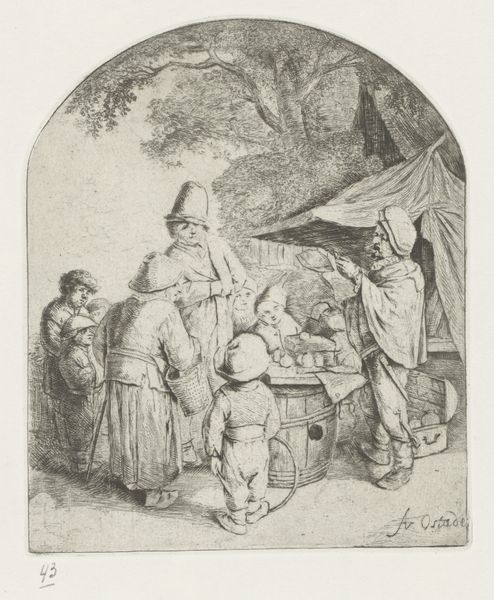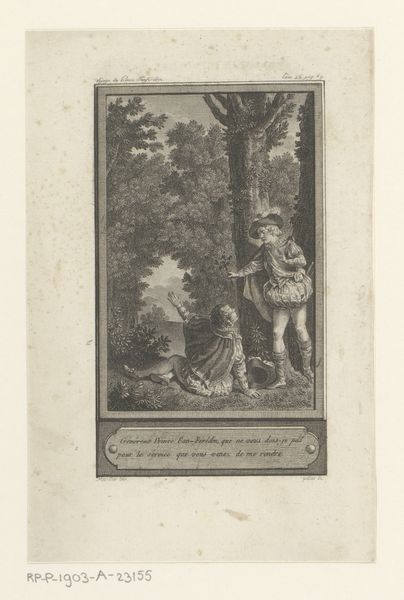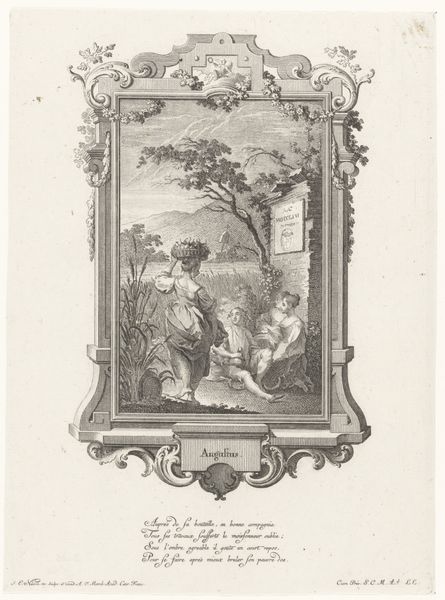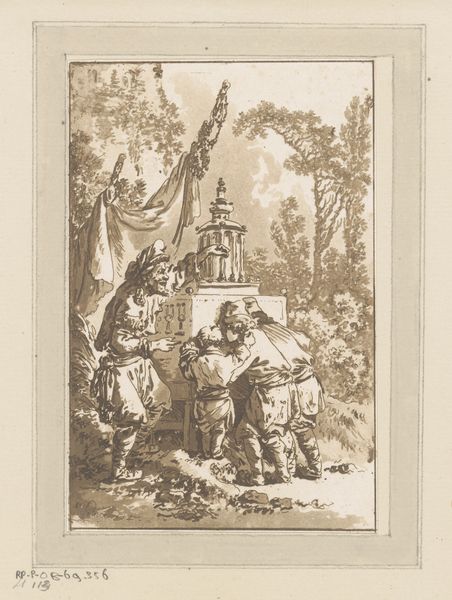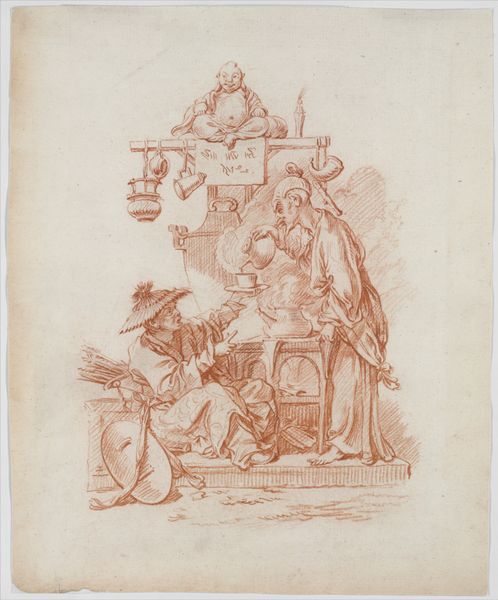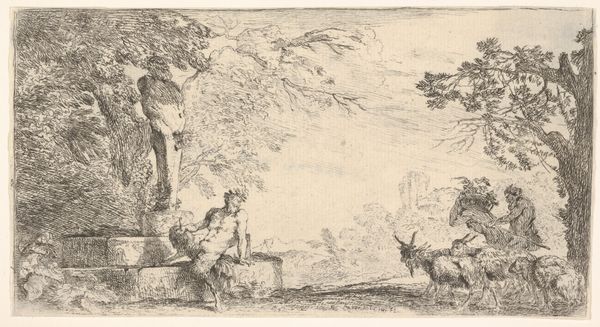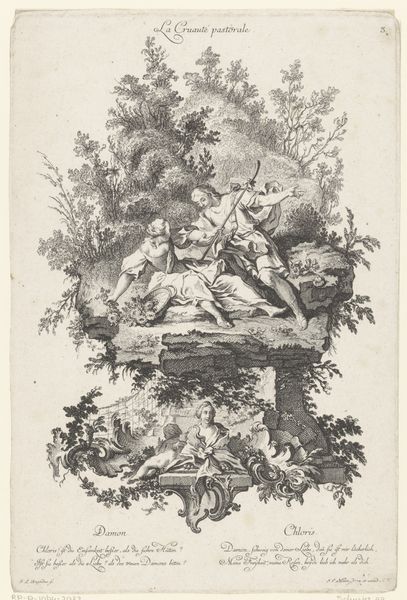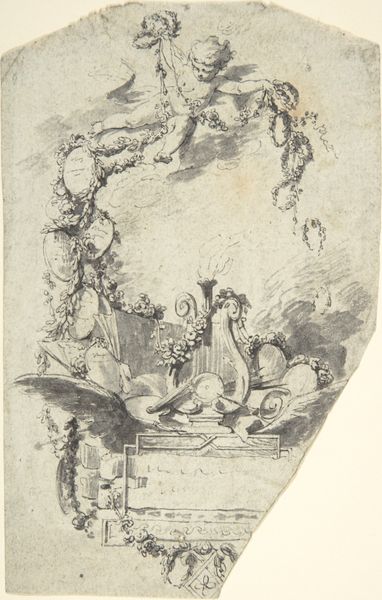
drawing, print, etching, ink
#
pen and ink
#
drawing
#
ink drawing
# print
#
etching
#
landscape
#
ink
#
genre-painting
Dimensions: 8 3/8 x 8 1/16 in. (21.3 x 20.4 cm.)
Copyright: Public Domain
Curator: This delicate etching is titled "Chinoiserie," created by Jean Pillement sometime between 1728 and 1808. The artwork currently resides at the Metropolitan Museum of Art. Editor: My initial impression is one of airy fantasy. The ink work creates such a light touch, and that pagoda-like structure is intriguing in how it juxtaposes constructed space with the loose depictions of flora. Curator: Indeed. Pillement was highly influential in developing the Rococo style, and we see that playful ornamentation clearly in this genre scene. This print offers an interesting lens into European fascination with East Asia. What do you think it tells us about labor and consumption in this period? Editor: I see how Pillement collapses high and low art here, adapting Asian motifs—particularly those concerning leisure and cultivated nature—into printed form, making them accessible for broader consumption and transforming practices. I wonder about who would be purchasing such an object, and why? Curator: It's about accessing new identities. These visual appropriations contributed to a broader cultural dialogue around empire and exoticism, both fetishizing and often misinterpreting Eastern cultures to serve European narratives. What does that parasol really mean, outside its functionality? What's its role in constructing this exotic image? Editor: Precisely. The parasol is both a decorative embellishment, contributing to the idealized setting, and perhaps also a nod to trade relations. But that begs the question of materiality: what materials and means of making are at stake in these trades, who is extracting and manufacturing them, and under what conditions? Curator: Looking through a lens of gender, I notice the ambiguity of the figures' roles. They are caught in this decorative, ambiguous landscape, perhaps as both worker and object. They seem positioned for the viewer's pleasure in ways that speak to larger patterns of orientalism and the objectification of othered figures. Editor: Absolutely, and their stillness also highlights the act of spectatorship inherent in the exchange of materials. These "chinoiseries" not only reshaped material culture, but also perpetuated complex relations between social classes in the process of art-making. The social dynamic inherent in its material is just as compelling as its form. Curator: This dialogue allows us to grasp its entanglement with issues of identity and representation during an era marked by intense cultural exchange, appropriation, and shifting social structures. Editor: Seeing how it bridges the exotic with the practical really brings the socio-economic implications into sharper focus, making the entire work more poignant.
Comments
No comments
Be the first to comment and join the conversation on the ultimate creative platform.
